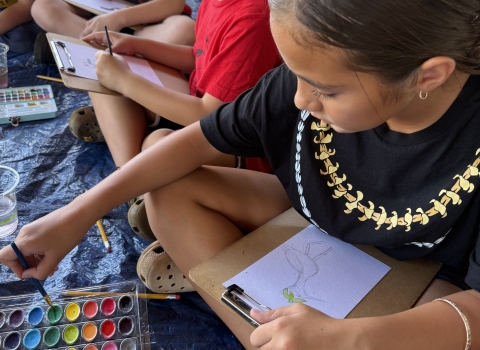This will be our final weekly report for 2023 unless circumstances with HPAI in the condor populations change. The Incident Command will provide another update in January 2024 when new information is available.
The U.S. Fish and Wildlife Service’s Incident Command Team, in collaboration with partner agencies, continues to develop and implement conservation strategies to help California condors as Highly Pathogenic Avian Influenza (HPAI) spreads on the landscape during fall migration season.
Incident Update
Field Operations
Based on the results of the vaccine trial, the Service determined it is appropriate to move forward with HPAI vaccinations of captively managed and free-flying condors. Results show the vaccination approach used for Group 1 birds, vaccination of 0.5ml on two occasions (initial injection and booster) is the best option to maximize protection for condors from HPAI. Antibody titers indicate the vaccine may reduce the severity of an infection and minimize the likelihood of mortality. Thus, vaccinating condors with the approved vaccine may provide some protection, and even if minimal, could reduce the amount of mortality and decrease the impact to the flock and recovery efforts, should we have another exposure to HPAI and outbreak.
The Incident Command and recovery partners are currently coordinating on the implementation of the HPAI vaccine in the captively managed and free-flying flocks. Together, we are evaluating logistics of vaccinating with the prime and boost approach (vaccination of 0.5ml on two occasions a minimum of 21 days apart). We do not anticipate vaccinating the entire captive flock prior to breeding season, which can begin in December, and will not disrupt breeding pairs for vaccinations. Additionally, the ability of release site managers to vaccinate free-flying birds under the two-dose regime will be challenging and variable based on staffing, infrastructure, bird behavior, and weather. The Incident Command and recovery partners will be working together to maximize vaccinations, while promoting captive and wild breeding, and safety for all birds. All condors will continue to be vaccinated by veterinarians licensed in the state according to USDA/State Veterinarian-approved site-specific plans.
Thus far, 17 vaccinated birds have been released across the range. Four additional birds are expected to be released on December 12 in central California by Ventana Wildlife Society, weather permitting, for a total of 21 birds.
California Condor Vaccination Trial
Final analysis for the samples from Group 1 for condors are complete. USDA’s Southeast Poultry Lab conducted hemagglutination inhibition tests on serum samples collected 42 days after the vaccination. The samples were evaluated for antibody titers that are commonly used as surrogate markers against influenza and other pathogens. Final analysis of Group 2 is pending.
Group 1 received a vaccination of 0.5ml on two occasions (initial injection and booster).
- Results show that 60% of the condors had titers that are expected to provide partial protection against mortality, while 10% of those birds had titers expected to provide protection against mortality.
Group 2 received a single 1 ml dose vaccine.
- Partial results show that six of the ten birds have lower antibody titers than antibodies present in Group 1 birds.



